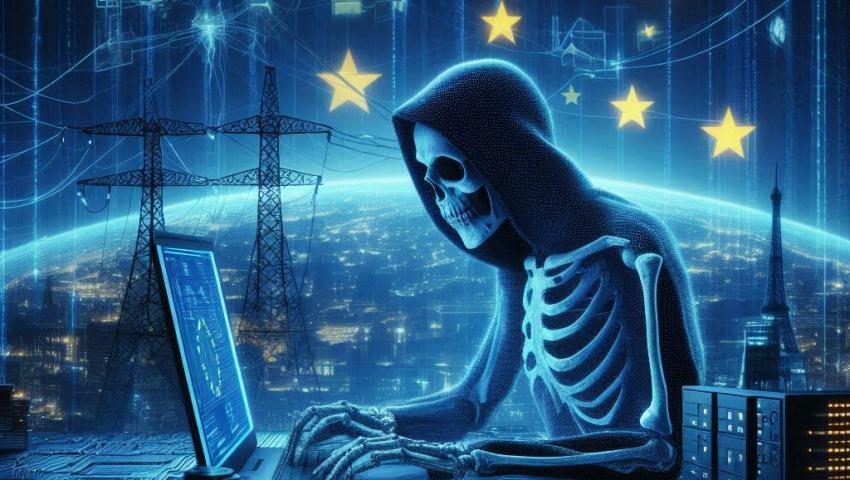
How Hackers Could Attack Europe's Energy Grid
In an era where digital infrastructure is as crucial as physical infrastructure, the threat of cyberattacks on Europe's energy grid is a growing concern. The DW News video "How hackers could attack Europe's energy grid | Business Beyond" delves into the alarming potential for hackers to disrupt the continent's energy supply.
The Vulnerabilities
Europe's energy grid is a complex network of power plants, transmission lines, and distribution systems. As the grid becomes increasingly digitized, it also becomes more vulnerable to cyberattacks. Hackers can exploit weaknesses in the grid's digital infrastructure to cause widespread disruptions. One of the primary vulnerabilities is the use of unencrypted radio signals to control power generation and distribution. This means that anyone with the right equipment could potentially send malicious commands to the grid.
Potential Attack Scenarios
There are several ways hackers could attack Europe's energy grid. One scenario involves targeting renewable energy facilities, such as solar power plants and rooftop installations. These facilities are critical to grid stability, and disrupting them could cause significant power outages. Another scenario involves hijacking the control systems for streetlights and other infrastructure. By replaying legitimate messages sent over the air, hackers could take control of these systems and cause chaos.
The Consequences
The consequences of a successful cyberattack on Europe's energy grid could be devastating. Power outages could affect millions of people, disrupt essential services, and cause economic losses. In addition, the loss of power could have serious implications for national security, as many critical systems rely on a stable energy supply.
Cybercrime Statistics from 2024
The year 2024 saw a significant increase in cybercrime activities. According to recent reports, global cybercrime costs are estimated to hit $9.5 trillion USD in 2024. This staggering figure underscores the growing audacity and complexity of cyberattacks. Additionally, ransomware attacks have become a major concern, with 72.7% of organizations falling prey to such attacks in 2023. The average cost of a ransomware attack was $4.54 million.
Ransom Payments in 2024
Despite the increase in cyberattacks, there was a notable decline in ransom payments in 2024. Ransomware payments dropped by 35% to approximately $813.55 million, down from $1.25 billion in 2023. This decline was largely driven by successful law enforcement takedowns and improved cyber hygiene, which enabled more victims to refuse payment. However, the number of ransomware attacks increased by 15% over the previous year, with a total of 5,263 successful attacks.
What Can Be Done?
To mitigate the risk of cyberattacks, it is essential to strengthen the security of the energy grid's digital infrastructure. This includes encrypting radio signals, implementing robust cybersecurity measures, and regularly testing the grid's defenses. Additionally, raising awareness about the threat of cyberattacks and educating users on how to protect themselves can help reduce the risk.
In conclusion, the threat of cyberattacks on Europe's energy grid is real and growing. By taking proactive steps to secure the grid's digital infrastructure, we can help protect against these potentially devastating attacks.
How Cy-Napea® Can Help Prevent Cyber Crimes
Cy-Napea® is a comprehensive cybersecurity platform designed to protect digital assets across various sectors. It offers a range of solutions, including Endpoint Detection and Response (EDR), Extended Detection and Response (XDR), and Managed Detection and Response (MDR). These solutions provide robust protection against cyber threats by continuously monitoring and responding to potential attacks.
Energy Sector: Cy-Napea® can help secure the energy grid by encrypting radio signals, monitoring network traffic, and detecting anomalies in real-time. This ensures that any malicious activity is quickly identified and mitigated, preventing disruptions to power generation and distribution.
Healthcare Sector: In healthcare, Cy-Napea® can protect sensitive patient data and ensure the integrity of medical devices. By implementing advanced threat detection and response capabilities, healthcare organizations can safeguard against ransomware attacks and data breaches.
Financial Sector: For financial institutions, Cy-Napea® offers comprehensive protection for online banking systems, transaction processing, and customer data. Its advanced threat intelligence and incident response capabilities help prevent fraud and ensure the security of financial transactions.
Manufacturing Sector: In manufacturing, Cy-Napea® can secure industrial control systems and prevent unauthorized access to critical infrastructure. By continuously monitoring for threats and vulnerabilities, it helps maintain the integrity and availability of manufacturing processes.
What Can Be Done?
To mitigate the risk of cyberattacks, it is essential to strengthen the security of the energy grid's digital infrastructure. This includes encrypting radio signals, implementing robust cybersecurity measures, and regularly testing the grid's defenses. Additionally, raising awareness about the threat of cyberattacks and educating users on how to protect themselves can help reduce the risk.
In conclusion, the threat of cyberattacks on Europe's energy grid is real and growing. By taking proactive steps to secure the grid's digital infrastructure and leveraging advanced cybersecurity solutions like Cy-Napea®, we can help protect against these potentially devastating attacks.
Sources :
How hackers could attack Europe's energy grid – DW – 02/18/2025
Researchers say new attack could take down the European power grid - Ars Technica
Top Cybersecurity Statistics for 2024 | Cobalt
Ransomware Payments Decreased by 35% in 2024
Ransom payments decline 35% in 2024, attack frequency increases




